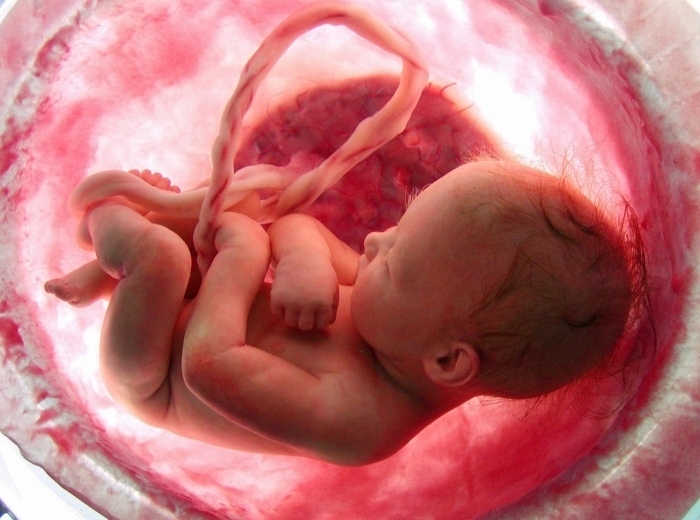Causes, treatment and prevention of embolism by amniotic fluid.
Contents of
- What is embolism with the amniotic fluid of the parturient woman?
- What are the reasons for this process when conducting cesarean delivery?
- Treatment of an ailment with caesarean section
- Emergency care for a woman with embolism with amniotic fluid
- Clinical recommendations for embolism with amniotic fluid
- Rehabilitation after embolism with amniotic fluid
- Embolism with amniotic fluid of the woman giving birth at caesarean section: prevention
- Video: Embolism with amniotic fluid
Labor is a complex anda delicate process, for the regulation and adjustment of which you need the help and experience of a professional gynecologist-obstetrician. One of the complications that may occur is embolism by amniotic fluid. This will be discussed in our material, and you will learn how to cure the disease and prevent it.
What is embolism with the amniotic fluid of the parturient woman?
Embolism is a rather dangerous pathology. In some cases, it even leads to death of both mother and child. This disease has another name - thromboembolism.
Embolism often occurs in women who have previously given birth. This may also cause swelling of the placenta itself. As a rule, embolism( thrombosis) occurs during childbirth. Only in some cases, the disease was noted in the early postpartum period.
Symptoms of the disease:
It is possible to suspect the appearance of an embolism during the birth of a child due to the lack of oxygen in the parturient woman. When the vessels of the lungs are filled with amniotic fluid, alveolar edema is formed, as a result of which the function of gas exchange is disrupted and hypoxia appears.
This can be accompanied by shortness of breath, rapid breathing, suffocation. The woman giving birth starts without any special reason to cough. With a cough begins to appear foam and bloody sputum.
 Embolism OB
Embolism OB These all the symptoms can be accompanied by strong pain in the abdomen and chest area. The skin turns pale, on it there is a peripheral ection, sometimes convulsions and swelling of soft muscle tissue.
Further development of the disease can cause uterine bleeding and spot hemorrhage of the epidermis. Very often, blood pressure drops sharply, the woman loses consciousness, her breathing and heart stop.
Embolism can be of several kinds:
- Collaptoid. During such an embolism, the cardiovascular system is disrupted, for example, blood pressure decreases, a woman can lose consciousness.
- Convulsive. There are rhythmic contractions of the muscle tissue, which alternate with its relaxation.
- Hemorrhagic. Accompanied by bleeding from the uterus, nose.
- Oedemas. During this embolism, fluid accumulates in the lungs, which prevents oxygen from entering the bloodstream.
- Lightning fast. The disease is very fast, during this period, the functionality of all organs is impaired.
 Embolism has different forms of
Embolism has different forms of The most severe form of the disease is lightning fast. It is she who can lead to death.
What are the reasons for this process when conducting cesarean delivery?
Embolism can occur for very diverse reasons:
- From rupture of the cervix or uterus during labor.
- After surgery( caesarean).
- Due to abnormal shell formation.
- Because of premature aging of the placenta.
- Because of swelling of the placenta.
- Because of the rapid delivery.
- After uncoordinated labor.
- If the pregnancy lasts longer than a certain period.
- Because of a large fetus.
- After the mother has been prescribed a drug to enhance contractions.
- Because of incomplete separation of the placenta.
- After an injury in the abdomen.
- Because of the age, usually that is 35 years.
- Because of thrombosis during pregnancy, veins on the legs.
 Embolism after cesarean
Embolism after cesarean Also embolism can develop due to a number of diseases, namely:
- Because of hypertension.
- Because of diabetes.
- Because of kidney failure.
- Because of the weakness of muscle mass in the pelvic region.
- Because of diseases that are directly related to the vascular tone.
- Because of vegetative-vascular dystonia.
Treatment of a disease in cesarean section
Embolism OB( amniotic fluid) - this is the situation where "it is necessary to always be ready."If the mother is still alive, immediate intensive care is given. But this can all be avoided if the complex treatment of the disease is carried out in advance. The main goals of treatment are:
- Restore the efficiency of the cardiovascular system.
- Restore the operability of the respiratory system.
- Carry out a correction of hemostasis.
- To compensate for blood loss.
- To bring the functionality of every vital organ and every system in the body to normal.
 Treatment of the disease
Treatment of the disease To restore the efficiency of the cardiovascular system and the respiratory system, a therapeutic measure is implemented that eliminates the woman's shock condition. Treatment, which is associated with coagulation disorders, is performed using the therapeutic technique of acute DIC syndrome. As a rule, the treatment is carried out simultaneously with the anesthesiologist and the resuscitator.
After all the treatment processes have been performed, a caesarean section is performed or natural delivery is performed. Everything will depend on what kind of obstetrical situation. If the measures do not have a positive effect, which stops bleeding in the uterus, the uterus is extirpated.
Urgent care for a woman in embolism with amniotic fluid
Emergency care for a woman in labor usually begins with the following:
- An obstetrician and an anesthesiologist is called immediately. In the following minutes, the woman is given emergency care.
- The woman is laid on the surface, which should be perfectly even.
- The woman is undressed so that she does not have tight clothes.
- A woman is given oxygen.
- The woman is injected with a special intravenous fluid( the best drug is rheopolyglucin).
- The woman is injected with an antispasmodic.
Also during the above manipulations, drugs are prepared, which are part of the first medical aid during the embolism.
Clinical recommendations for embolism with amniotic fluid
Clinical recommendations for embolism OB are considered very important and mandatory. As a rule, the diagnosis of this disease is carried out in the hospital. From the very beginning, the standard methods are used: the collection of anamnesis and the definition of complaints, the woman is examined, as a consequence of which the embolism of the OB is detected.
 Clinical recommendations
Clinical recommendations Clinical diagnosis of the disease is carried out by the following methods:
- Electrocardiographic examination is performed, which makes it possible to identify sinus tachycardia, as well as hypoxia of the myocardium.
- X-rays of the chest are carried out, which makes it possible to detect interstitial edema, which resembles a photo of the open wings of an ordinary butterfly.
- Complete blood count is performed.
- The cervix is carefully inspected. For this, gynecological mirrors are used that help to discover the causes of the disease.
- The volume of platelets is determined, blood coagulation is checked. This helps to make an accurate diagnosis.
These examinations make it possible to diagnose OB embolism with the greatest accuracy.
Rehabilitation after embolism with amniotic fluid
Since the disease is considered quite complicated, a woman after it needs mandatory rehabilitation. It will be aimed at adjusting the identified problems with the analogy of rehabilitation. Rehabilitation itself is carried out after traumatic and hemorrhagic shock, as well as after DIC syndrome.
Embolism by the amniotic fluid of the parturient woman with caesarean section: prevention of
With this disease it is very important to prevent the stage when the doctor needs urgent help. As the statistics show, the main restoring methods, in general, lead to disappointing consequences. Therefore, in order to avoid this, it is necessary to carry out a number of preventive measures that can prevent the risk of embolism OB.
So, let's consider those measures that pregnant women should observe in order to avoid the appearance of an embolism OB:
- It is necessary to exclude swelling of the legs. This is mainly manifested in large women and girls, as well as those who love salty foods. The human body can not independently derive a large number of mineral components. It is always worth remembering that the body now functions for two. In this case, you can use diuretic drugs to exclude salt stagnation in the organs and throughout the body.
- To exclude the formation of blood clots, you must correctly plan your own day by the hour and include physical training. In addition to healing qualities, they are also able to return a slender figure to a woman after the birth of the child.
 Important correct treatment and regular inspection
Important correct treatment and regular inspection - Regularly undergo a doctor's examination for the absence of various diseases.
- Limit the use of medications that have not been prescribed by a gynecologist. Pregnant women should take only those drugs prescribed by their treating doctors. Other medications without consulting a gynecologist are strictly prohibited.
- Eliminate completely stressful situations and disorders. The doctor in this case can prescribe a sedative sedative medication.
- It is necessary to lead a healthy lifestyle, to competently approach the planning of future pregnancies.
- A special diet should be followed, which will contain a moderate amount of proteins, fats and carbohydrates.
